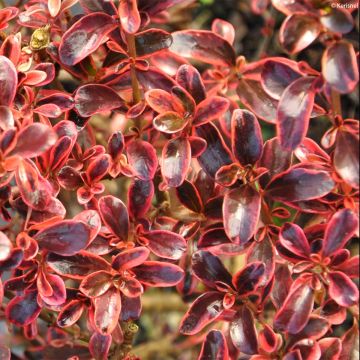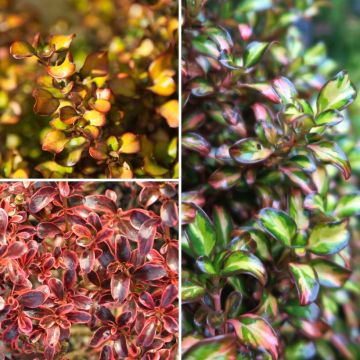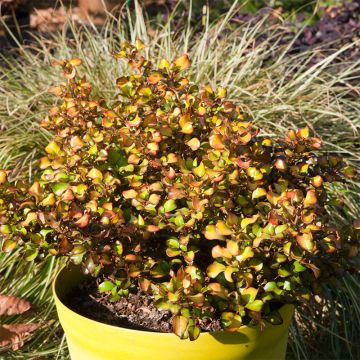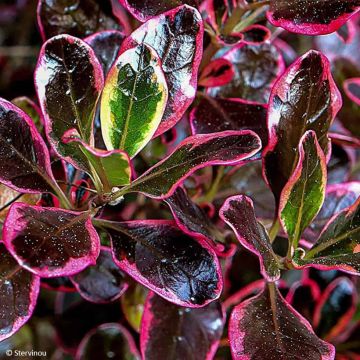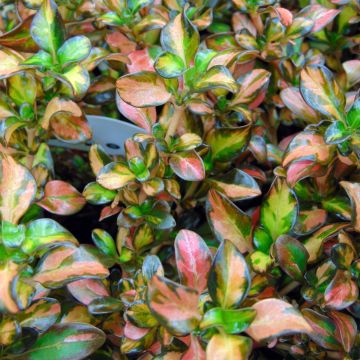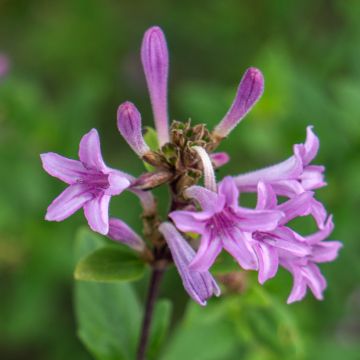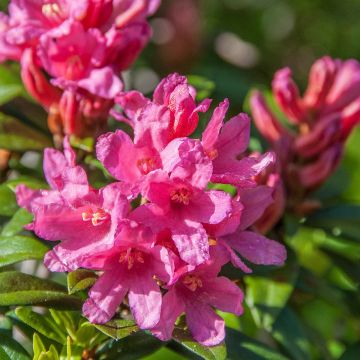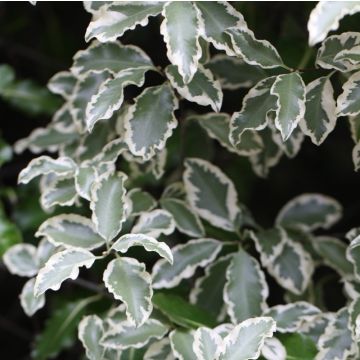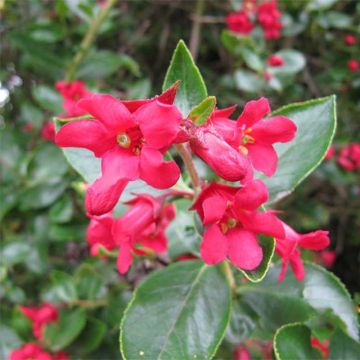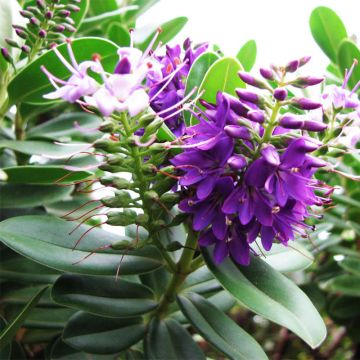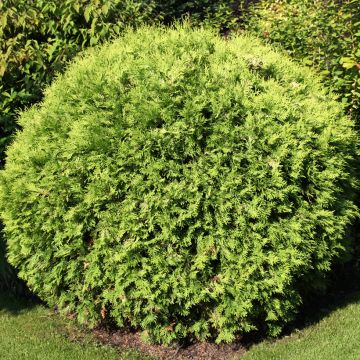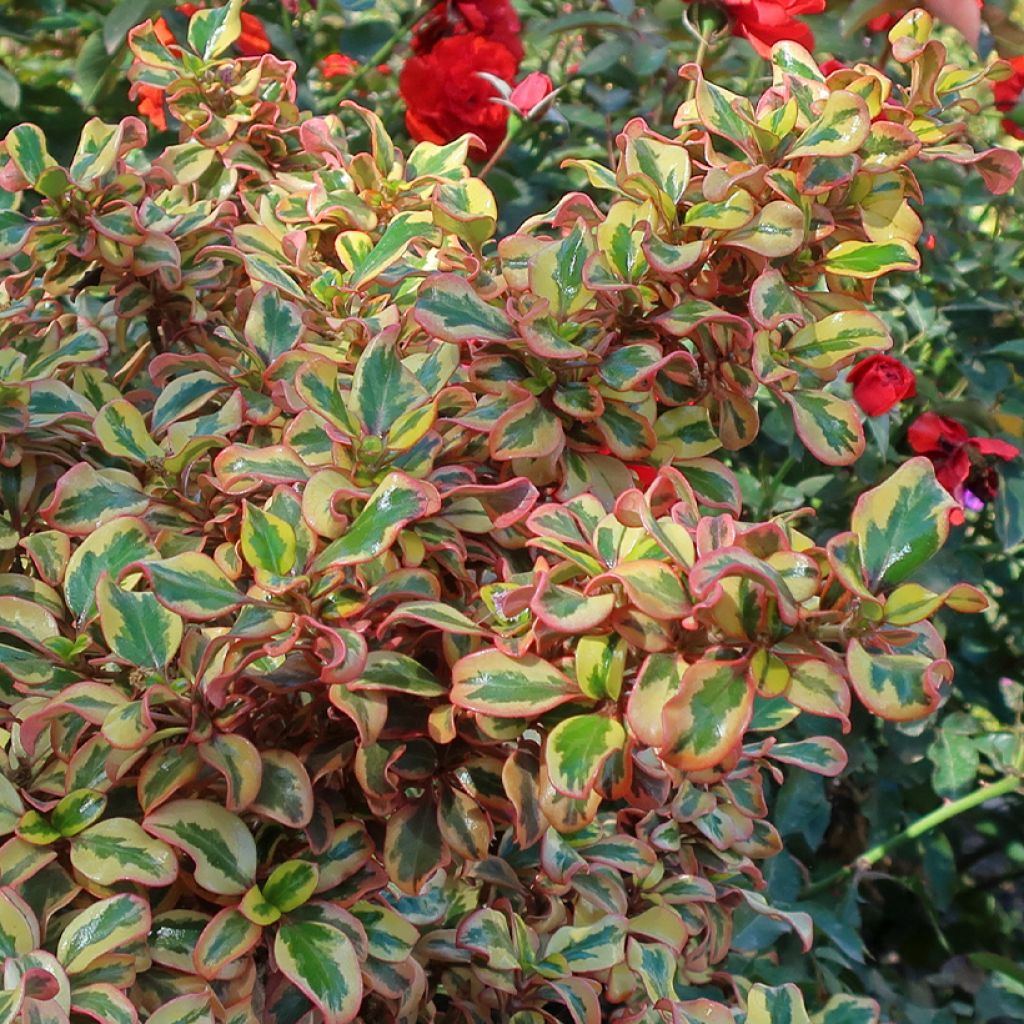

Coprosma repens Pink Splendor
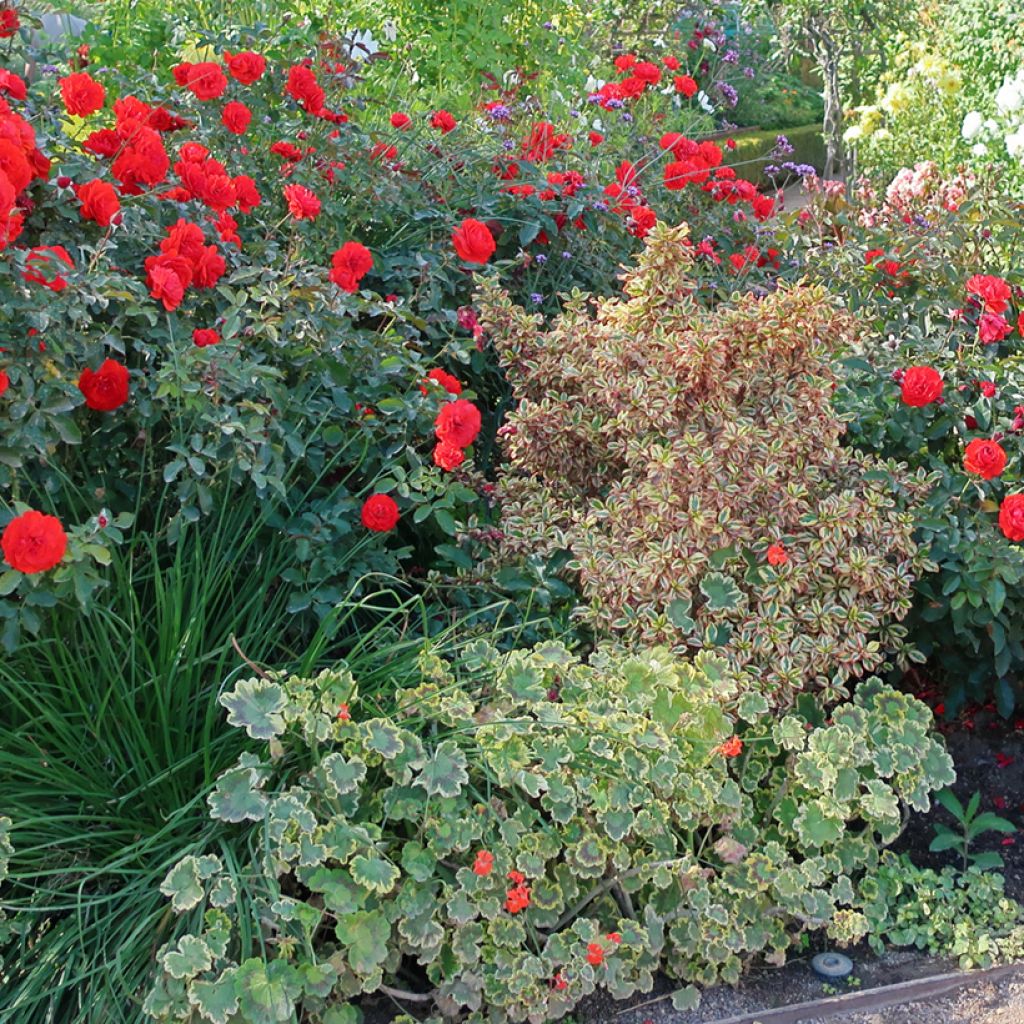

Coprosma repens Pink Splendor
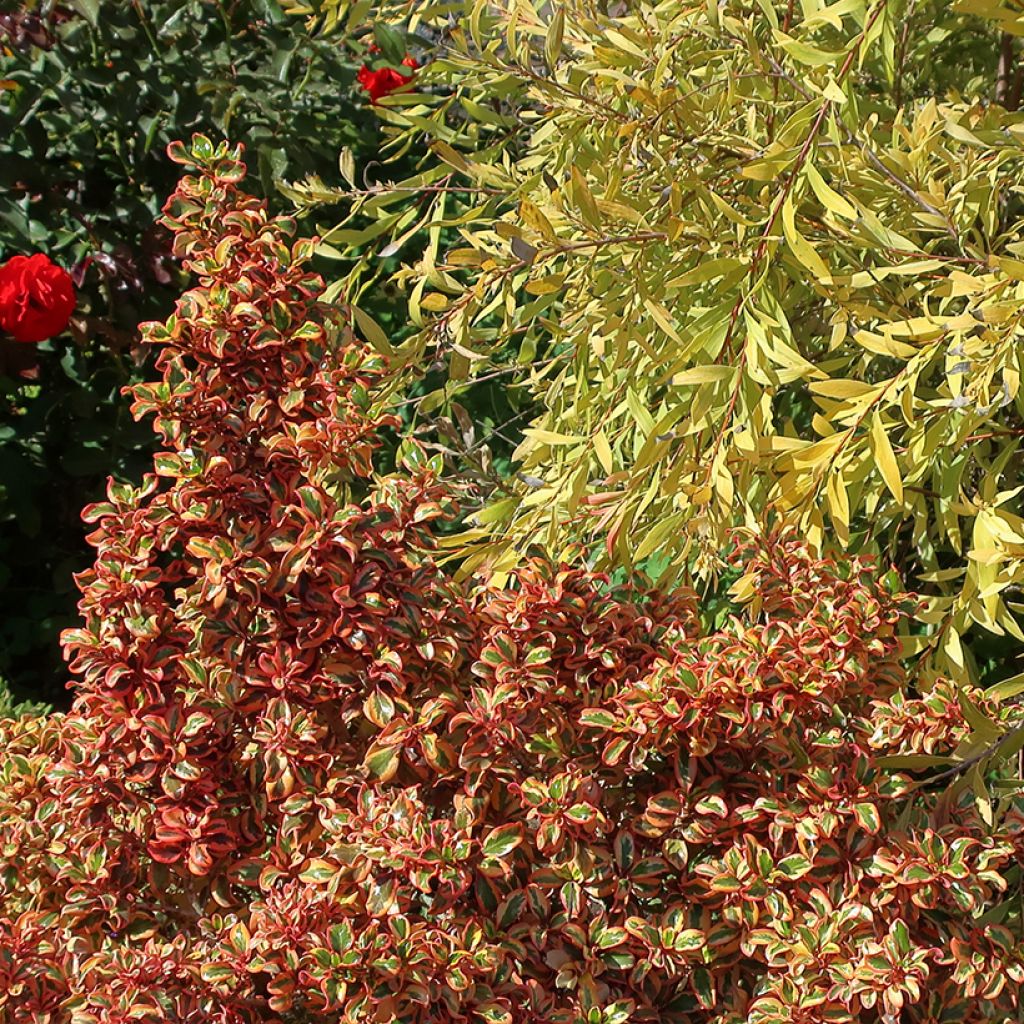

Coprosma repens Pink Splendor
Coprosma repens Pink Splendour
Coprosma x repens Pink Splendor
Mirror Plant, Looking-glass plant
Why not try an alternative variety in stock?
View all →This plant carries a 24 months recovery warranty
More information
We guarantee the quality of our plants for a full growing cycle, and will replace at our expense any plant that fails to recover under normal climatic and planting conditions.
From €5.90 for pickup delivery and €6.90 for home delivery
Express home delivery from €8.90.
Does this plant fit my garden?
Set up your Plantfit profile →
Description
Coprosma 'Pink Splendour' is a small evergreen bush with multicoloured foliage, decorative all year round, with the pink shade intensifying in winter. Originally from New Zealand, it is not very hardy, but resistant to drought once well-rooted, and very tolerant to sea spray. This makes it a perfect subject for coastal areas. Its very dense foliage, composed of small tough leaves, is shiny and dark green, yellow, and pink. With its modest size, it will be perfect for enhancing a flowerbed, in full sun or partial shade, in non-chalky soil. In climates too cold for it to be planted in the ground, it can easily be grown in a pot on a terrace and brought indoors in winter.
The genus Coprosma consists of 90 species of evergreen bushes and small trees, most of which are native to New Zealand. These plants belong to the extensive family of Rubiaceae (over 10,000 species), which also includes Coffee and Gardenia, for example. Recently arrived on the European horticultural market, these bushes, called mirror plants, develop extremely shiny foliage where light and colours play wonderfully. From their origins, these tender plants have retained a preference for dry and hot climates and poor, well-drained soils. Hybrids and cultivars like 'Pink Splendour' are not very hardy and suffer from temperatures below -4°C (24.8 °F). Their cultivation in the ground is therefore reserved for coastal areas spared from severe frosts.
Coprosma 'Pink Splendor' is a hybrid bush resulting, among others, from the species Coprosma repens. It has an upright and dense habit, reaching a height of about 1.50 m (4 ft 11 in) and a spread of 1.20 m (3 ft 11 in) at maturity. Its foliage is evergreen and composed of small, opposite, entire, lanceolate, tough, and very shiny leaves. Slightly undulate, they have a dark green centre surrounded by an irregular margin, with a mix of yellow (or creamy white in partially shaded exposure) and salmon pink. The colours are less vibrant if the plant is not exposed to full sun. From autumn, when the first cold weather arrives, the pink intensifies day by day, further enhancing the aesthetic of the bush. This variety is a male clone that does not produce berries like the female varieties such as 'Fire Burst'. This Coprosma grows in neutral to acidic, light, poor, even sandy soil, preferably in full sun but tolerates partial shade. It has low hardiness, tolerating only brief frosts around -4°C/-6°C (21.2 °F).
The Coprosma 'Pink Splendour' is a very popular bush in New Zealand for its decorative aspect, its adaptation to the local climate, and its excellent resistance to insects and diseases. Its variegated foliage will be highlighted when associated with Pittosporum tobira, a large bush with shiny dark green foliage, also resistant to salt spray, and whose white flowering fills the air with fragrance in spring. With its grey foliage, Elaeagnus ebbingei will also be a good companion, and its autumn flowering, albeit discreet, is very fragrant. And for its abundant white flowering, which earned it the common name Tree Aster, try Olearia x haastii, another New Zealand evergreen.
Report an error about the product description
Coprosma repens Pink Splendour in pictures
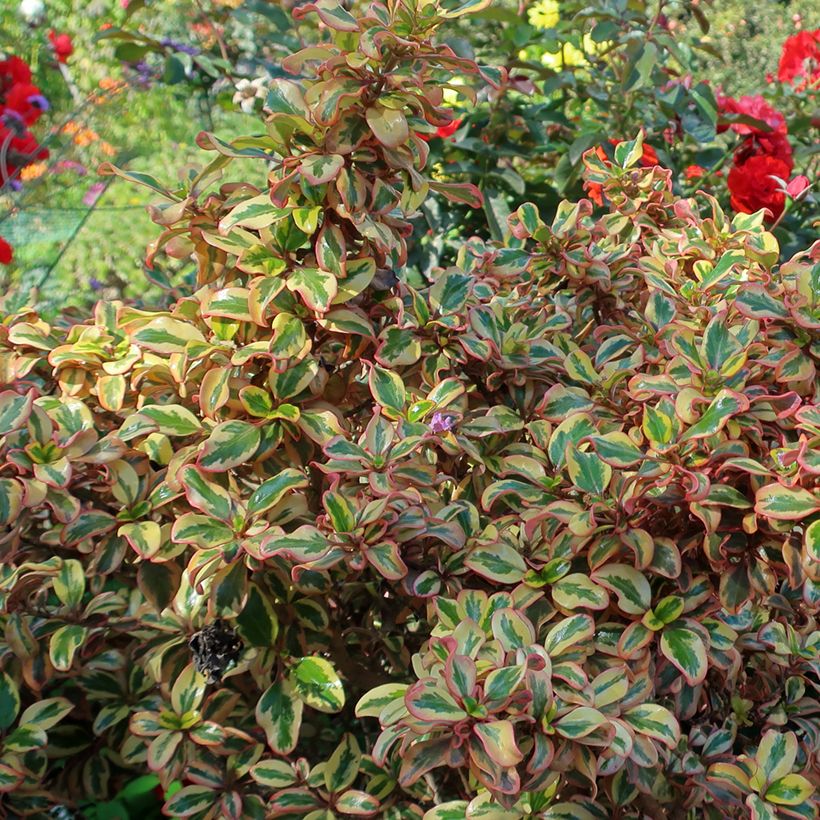

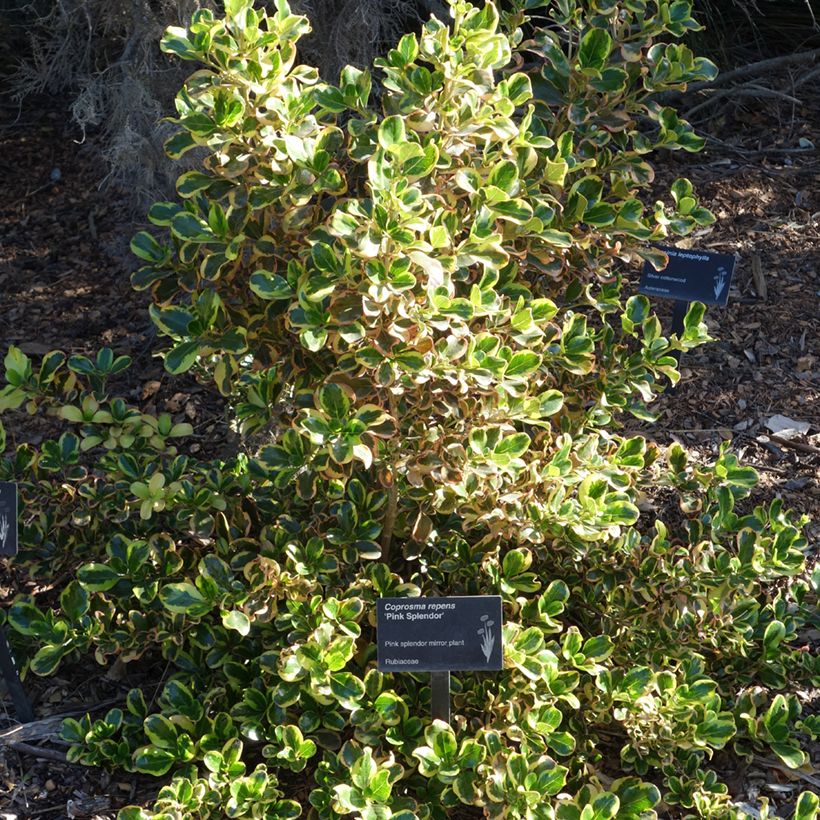

Plant habit
Flowering
Foliage
Botanical data
Coprosma
x repens
Pink Splendor
Rubiaceae
Mirror Plant, Looking-glass plant
Cultivar or hybrid
Other Coprosma
Planting and care
Coprosma 'Pink Splendour' thrives in open ground in frost-free coastal regions. It is best planted in spring, in full sun or partial shade, with the autumn colours being more intense in the sun. It is a plant that tolerates drought and poor soils but dislikes the presence of limestone. Plant it in light, well-drained soil, for example, a mix of leaf compost, ericaceous soil, and river sand. The planting hole should be twice the size of the root ball. Water frequently at the beginning to help with establishment, but allow the soil to dry out between waterings. Once well established, the Coprosma does not require watering in summer.
Pruning is not essential, if necessary, prune sparingly between April and August. Regularly water plants in containers. In cold regions, bring them indoors to a cool, bright room with little or no heating before the arrival of heavy frosts.
Modern hybrids seem to be less prone to attacks from scale insects and sooty mould. However, plants grown in greenhouses will be more exposed to these pests and diseases.
Planting period
Intended location
Care
This item has not been reviewed yet - be the first to leave a review about it.
Evergreen shrubs
Haven't found what you were looking for?
Hardiness is the lowest winter temperature a plant can endure without suffering serious damage or even dying. However, hardiness is affected by location (a sheltered area, such as a patio), protection (winter cover) and soil type (hardiness is improved by well-drained soil).

Photo Sharing Terms & Conditions
In order to encourage gardeners to interact and share their experiences, Promesse de fleurs offers various media enabling content to be uploaded onto its Site - in particular via the ‘Photo sharing’ module.
The User agrees to refrain from:
- Posting any content that is illegal, prejudicial, insulting, racist, inciteful to hatred, revisionist, contrary to public decency, that infringes on privacy or on the privacy rights of third parties, in particular the publicity rights of persons and goods, intellectual property rights, or the right to privacy.
- Submitting content on behalf of a third party;
- Impersonate the identity of a third party and/or publish any personal information about a third party;
In general, the User undertakes to refrain from any unethical behaviour.
All Content (in particular text, comments, files, images, photos, videos, creative works, etc.), which may be subject to property or intellectual property rights, image or other private rights, shall remain the property of the User, subject to the limited rights granted by the terms of the licence granted by Promesse de fleurs as stated below. Users are at liberty to publish or not to publish such Content on the Site, notably via the ‘Photo Sharing’ facility, and accept that this Content shall be made public and freely accessible, notably on the Internet.
Users further acknowledge, undertake to have ,and guarantee that they hold all necessary rights and permissions to publish such material on the Site, in particular with regard to the legislation in force pertaining to any privacy, property, intellectual property, image, or contractual rights, or rights of any other nature. By publishing such Content on the Site, Users acknowledge accepting full liability as publishers of the Content within the meaning of the law, and grant Promesse de fleurs, free of charge, an inclusive, worldwide licence for the said Content for the entire duration of its publication, including all reproduction, representation, up/downloading, displaying, performing, transmission, and storage rights.
Users also grant permission for their name to be linked to the Content and accept that this link may not always be made available.
By engaging in posting material, Users consent to their Content becoming automatically accessible on the Internet, in particular on other sites and/or blogs and/or web pages of the Promesse de fleurs site, including in particular social pages and the Promesse de fleurs catalogue.
Users may secure the removal of entrusted content free of charge by issuing a simple request via our contact form.
The flowering period indicated on our website applies to countries and regions located in USDA zone 8 (France, the United Kingdom, Ireland, the Netherlands, etc.)
It will vary according to where you live:
- In zones 9 to 10 (Italy, Spain, Greece, etc.), flowering will occur about 2 to 4 weeks earlier.
- In zones 6 to 7 (Germany, Poland, Slovenia, and lower mountainous regions), flowering will be delayed by 2 to 3 weeks.
- In zone 5 (Central Europe, Scandinavia), blooming will be delayed by 3 to 5 weeks.
In temperate climates, pruning of spring-flowering shrubs (forsythia, spireas, etc.) should be done just after flowering.
Pruning of summer-flowering shrubs (Indian Lilac, Perovskia, etc.) can be done in winter or spring.
In cold regions as well as with frost-sensitive plants, avoid pruning too early when severe frosts may still occur.
The planting period indicated on our website applies to countries and regions located in USDA zone 8 (France, United Kingdom, Ireland, Netherlands).
It will vary according to where you live:
- In Mediterranean zones (Marseille, Madrid, Milan, etc.), autumn and winter are the best planting periods.
- In continental zones (Strasbourg, Munich, Vienna, etc.), delay planting by 2 to 3 weeks in spring and bring it forward by 2 to 4 weeks in autumn.
- In mountainous regions (the Alps, Pyrenees, Carpathians, etc.), it is best to plant in late spring (May-June) or late summer (August-September).
The harvesting period indicated on our website applies to countries and regions in USDA zone 8 (France, England, Ireland, the Netherlands).
In colder areas (Scandinavia, Poland, Austria...) fruit and vegetable harvests are likely to be delayed by 3-4 weeks.
In warmer areas (Italy, Spain, Greece, etc.), harvesting will probably take place earlier, depending on weather conditions.
The sowing periods indicated on our website apply to countries and regions within USDA Zone 8 (France, UK, Ireland, Netherlands).
In colder areas (Scandinavia, Poland, Austria...), delay any outdoor sowing by 3-4 weeks, or sow under glass.
In warmer climes (Italy, Spain, Greece, etc.), bring outdoor sowing forward by a few weeks.

































